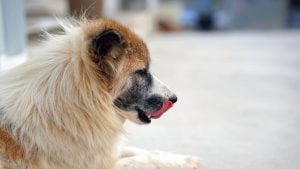If you suffer from pet allergies but still dream of sharing your home with a furry companion, hypoallergenic dogs might be the answer. While no dog is 100% allergen-free, hypoallergenic breeds typically produce fewer allergens, shed less, and may trigger fewer allergic reactions in sensitive individuals.
In this guide, we’ll explore which breeds are considered hypoallergenic, the benefits of choosing one, and how to care for them properly to minimize allergens in your home.
Why Do Dogs Cause Allergies?
Most dog allergies are caused by proteins found in a dog’s dander (dead skin flakes), saliva, and urine. These allergens can cling to fur and become airborne, especially when dogs shed.
People with pet allergies react when they inhale or come into contact with these proteins. That’s why breeds that shed less and produce less dander are often labeled as “hypoallergenic.”
Benefits of Hypoallergenic Dogs
-
Reduced Allergic Reactions: Hypoallergenic dogs are less likely to trigger sneezing, itching, or watery eyes in allergy sufferers.
-
Low Shedding: Many breeds have hair instead of fur, which grows continuously and sheds minimally.
-
Cleaner Homes: Less shedding means less pet hair on furniture, floors, and clothing.
-
Easier Grooming Maintenance: While some hypoallergenic breeds need regular grooming, many are easier to manage for allergy-conscious homes.
Popular Hypoallergenic Dog Breeds

Here are some of the most commonly recommended breeds for people with dog allergies:
1. Poodle (Standard, Miniature, and Toy)
-
Curly, dense coat that traps dander
-
Intelligent and easy to train
-
Requires regular grooming to prevent matting
2. Bichon Frise
-
Soft, curly coat with minimal shedding
-
Affectionate and playful
-
Needs consistent grooming and brushing
3. Maltese
-
Long, silky coat with little dander
-
Gentle and loving lap dog
-
Daily brushing keeps the coat tangle-free
4. Portuguese Water Dog
-
Wavy or curly coat
-
Athletic and energetic
-
Excellent for active families
5. Schnauzer (Miniature, Standard, and Giant)
-
Harsh, wiry coat
-
Loyal, alert, and protective
-
Regular haircuts help control allergens
6. Soft Coated Wheaten Terrier
-
Single-layer coat with minimal dander
-
Friendly and lively
-
Needs weekly grooming
7. Lagotto Romagnolo
-
Woolly coat similar to a poodle
-
Truffle-hunting heritage makes them intelligent and driven
-
Requires regular grooming
8. Chinese Crested
-
Hairless variety has very little dander
-
Powderpuff variety also sheds minimally
-
Needs skincare for exposed skin
Caring for Hypoallergenic Dogs

While hypoallergenic breeds can help reduce allergens, proper care is still essential for managing symptoms and keeping your dog healthy.
Grooming Tips
-
Brush regularly to remove loose hair and reduce dander buildup.
-
Bathe your dog every 2–4 weeks using a gentle, hypoallergenic shampoo.
-
Clean ears and trim nails to prevent infections and keep allergens under control.
-
Visit a professional groomer regularly to maintain coat health and minimize shedding.
Environmental Cleaning
-
Vacuum with a HEPA filter regularly to remove pet hair and dander.
-
Wash your dog’s bedding weekly in hot water.
-
Use an air purifier to reduce airborne allergens in your home.
-
Keep your dog off beds and couches if allergies are severe.
Nutrition and Supplements
A high-quality diet supports skin and coat health, which may reduce dander. Look for foods that contain:
-
Omega-3 fatty acids (for skin hydration and coat shine)
-
Limited-ingredient or sensitive-skin formulas (if allergies are suspected)
-
Hollywood Feed Favorites: Stella & Chewy’s, Fromm, Farmina, and ACANA—all offer formulas tailored to sensitive dogs.
Hypoallergenic Dog Myths
Myth 1: Hypoallergenic dogs won’t trigger allergies.
Truth: No breed is completely allergy-free, but hypoallergenic dogs produce fewer allergens.
Myth 2: Hairless dogs are allergen-free.
Truth: Allergens also come from saliva and dander, not just fur.
Myth 3: Smaller dogs are always better for allergies.
Truth: Allergen levels vary by breed and grooming habits—not size alone.

Recap: Hypoallergenic Dogs at a Glance
-
Definition: Breeds that produce fewer allergens and shed less
-
Popular Breeds: Poodles, Maltese, Bichon Frise, Schnauzer, Portuguese Water Dog
-
Benefits: Reduced allergic reactions, cleaner homes, easier grooming
-
Care Needs: Frequent grooming, clean environment, allergy-conscious diet
-
Hollywood Feed Tip: Ask your local store about hypoallergenic food, grooming products, and supplements
Frequently Asked Questions (FAQ)
Q: Are hypoallergenic dogs safe for people with severe allergies?
A: It depends. Hypoallergenic breeds may reduce symptoms, but highly sensitive individuals may still react. Spending time with a breed before adoption can help you gauge your reaction.
Q: Do hypoallergenic dogs require less grooming?
A: Actually, many require more frequent grooming to manage their coats and reduce allergens.
Q: Are mixed breeds like Goldendoodles hypoallergenic?
A: Possibly. Some Doodle mixes inherit the low-shedding coat from their Poodle parent, but results vary by individual dog.
Q: Can diet help reduce allergens in dogs?
A: Yes. Proper nutrition supports skin and coat health, which can reduce dander. Omega-3s and limited-ingredient diets may help.
Thinking of bringing home a hypoallergenic dog? Visit your local Hollywood Feed or browse our online selection for the best allergy-conscious food, grooming tools, and expert advice to help you and your pup live your best life—sneeze-free.
Check out our other blog posts on pet Health & Nutrition.








